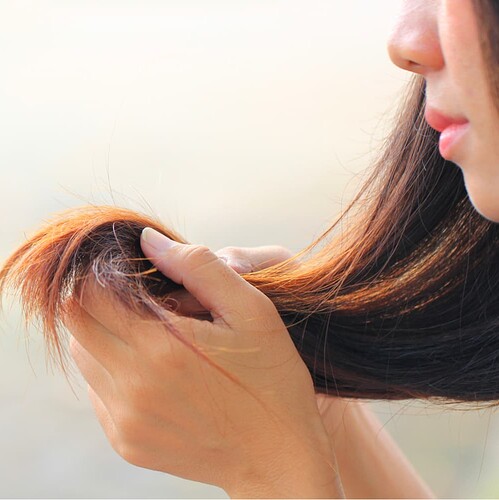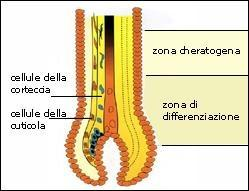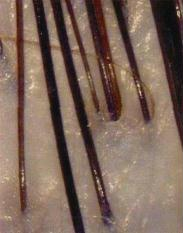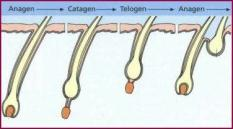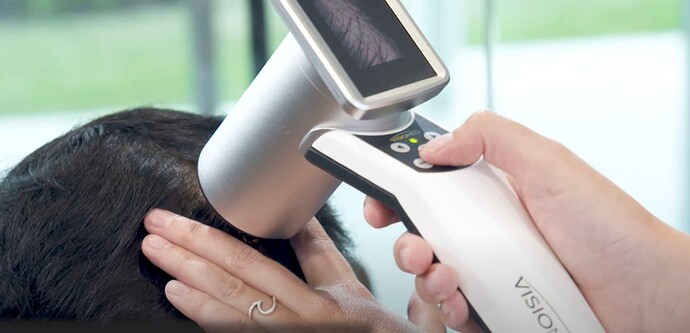It is left to Captain but let me complete the script here first, a lot of reading to do, planning for today or tomorrow.
Would this be superior to Lion’s Mane?
As the creator of lions mane, yes lol
Seems more packed
Grey hair reversal too?
Please add cosmorna too
I got my emotions and ego under control now.
Will try to share my primer PDF of all things such all the multifaceted aspects with research I gathered this Saturday here, just held up with other projects.
A very comprehensive thing, let’s negentropically mog with our hair now.
Leave no stone unturned.
The Draft Script looking Great Man! , Thinking of adding more later?
At this point, what can you add lol? Has A-Z regarding hair growth, recovery, etc
I will add, still need to read some articles.
Smart stress field. Anytime stress is lurking up, it brings you back into a state of calmness and relaxation.
Lol just like a Last min roundup to see if anything’s missing!
I can think of is a Simulant of Bhringraj Hair Oil/Almond Hair oil with essential components of Vitamin E to Nourish and Thicken Hair Follicles.
Still 2 articles left to read and compile.
@Hauru your inputs on TCM about hair, don’t want to spend more time researching now lol?
Others, will add the supplements like oils and vitamins at the end.
Fluoride is one of the cause of hair loss. How we expose our hair to fluoride is through showering. Our shower head water contains fluoride which causes massive shedding, hence why when you usually shower, you see more shedding than usual vs dry. It also disrupts your thyroid.
Another cause is our diet, basically consuming food that contains phytic acid. Mostly in grains, rice, breads, vegetables, etc. The acid prevents appropriate absorption of the nutrients that are needed for the body, in which case, the body does not utilize the nutrients enough. Solution could be to enhance the nutrient absorption.
So hyped for this 
Most of the hair growth formula work with male pattern baldness. What if female have thinning hair … the reasons are altogether different. This must be included in blueprint of hair
I’m sure there can be universal solutions.
Maybe aliens could benefit too.
I have my own guide I’m putting together.
Will post in this thread right here.
Meanwhile gonna post what ChatGPT comes up with, and compare two.
The Hair Manifesto
Problems + Solutions
Cuneiform hair or dwarf hair
Summary
This is very short hair, between 1 cm and a maximum of 2 cm in length, which usually has insufficient pigmentation. This hair has a base structure that is quite large, almost like normal hair. It then tends to get smaller towards the end, thus taking on the form of a very pointed cone.
This hair has a strong tendency to fall out.
Cuneiform or dwarf hair looks a lot like hair in a normal growth phase. However, unlike this hair, it does not grow beyond this length and has the tendency to disappear permanently.
This phenomenon is notable during the terminal phase of seborrheic hair loss, characterized by hair loss caused by seborrhoea.
Split ends
Summary
It is impossible to definitively remove split ends by cutting them. If the cause is not removed, they will come back during the hair regrowth phase.
In hair that has split ends, the hair shaft shows pronged ends.
Another frequent physiological alteration of hair ends is trichorrhexis nodosa.
In this situation, the hair shaft takes the form of the tip of a pen, with the presence of lengthwise cracks and nodules located along the entire shaft.
The term “Bubble Hair” indicates the presence of air bubbles inside the hair shaft.
Bubble Hair may be found in areas of fragile, thin and broken hair. Problems such as ringworm may cause Bubble Hair.
The last remedy for combating split ends and hair that breaks easily is to cease all chemical treatments (strong dyes, perms, highlights, decolorations, etc.). Moreover, it is important to undergo an oil or hydrating mask treatment, then cleansing the scalp and lastly proceeding with washes that require just one dosage of shampoo so as to not further damage the hair shaft.
Regardless of the treatments proposed, it is important to remember that the first remedy for split ends is prevention, which consists in a lifestyle that guarantees perfect hair health, thereby avoiding the phenomenon of split ends.
Proper nutrition providing the raw materials also allows us to strengthen damaged hair, making it less susceptible to split ends.
It is also useful to stop or reduce smoking, as smoke allows toxins to enter the circulation and these are then also absorbed by the hair bulbs, with harmful effects on the keratinization process, and favoring the appearance of split ends.
Details
Hair
Summary
Overview:
What?
Hair problems are conditions or issues that can affect the health, appearance, and growth of hair. Some common hair problems include hair thinning, hair loss, breakage, split ends, dryness, and scalp conditions such as dandruff and scalp infections. These problems can be caused by a variety of factors, including genetics, hormonal imbalances, nutrient deficiencies, stress, and environmental factors such as pollution and excessive heat styling. Identifying and addressing the underlying causes of hair problems is essential for improving hair health and growth. This can be done through a combination of lifestyle changes, dietary modifications, haircare routines, and in some cases, medical treatments.
Hair Structure:
Simplified Description
- Hair is made up of three layers: the cuticle, cortex, and medulla.
- The cuticle is the outermost layer of hair, composed of overlapping scales that protect the hair shaft.
- The cortex is the thickest layer of hair, responsible for hair strength, elasticity, and color.
- The medulla is the innermost layer of hair, consisting of cells that are loosely packed together.
Hair Chemical Composition:
- Hair is primarily made up of a protein called keratin.
- Keratin is composed of amino acids, which are arranged in a specific sequence and linked together by peptide bonds.
- Other components of hair include melanin, which gives hair its color, and lipids, which help to maintain the structure and flexibility of the hair.
Understanding the structure and chemical composition of hair is important in developing effective hair care products and treatments. By understanding the physical and chemical properties of hair, it is possible to develop products that can improve hair health, strength, and appearance.
[details=“Detailed - What is Hair?” Description:]
The hair on our bodies has a particular structure and is divided into thin and thick hair. Thin hair, also called lanugo or vellus, is located on all skin surfaces except for the palms of the hands and the soles of the feet. Thick hair, also called terminal hair, is dark and located only in some areas such as the scalp, the armpits, the pubic area, the beard area in the case of men, etc…
The hair on our bodies has a particular structure and is divided into thin and thick hair. Thin hair, also called lanugo or vellus, is located on all skin surfaces except for the palms of the hands and the soles of the feet. Thick hair, also called terminal hair, is dark and located only in some areas such as the scalp, the armpits, the pubic area, the beard area in the case of men, etc…

Hair is located in the hair follicle, a particular skin structure with a sac-like form, tilted by approximately 75° with respect to the skin’s surface. The lower part of the hair follicle is located in the deeper part of the dermis but its depth level varies from hair to hair (in the case of hair on the head, the average depth is around 0.6 -1 cm).
The sebaceous gland is attached to the upper third of the hair follicle. The hair follicle and sebaceous gland together are called the pilosebaceous unit. The arrector pili muscles of the hair are located on andanchored to the sebaceous glands, on the outer wall of the follicle. Inside the hair follicle we can note the following: it emerges from the skin’s surface through an opening called an ostium; there is a narrowing in the upper third called the shaft; it also features a portion between the ostium and the shaft, called the infundibulum, a portion located between the shaft and lower part of the arrector pili muscles, called the bulge and finally a part underneath the bulge called the hair root.
In the center of the root, at the base of the follicle, is a loop facing upward and containing connective tissue full of blood vessels, lymphatic vessels and nerves, called the papilla, which is responsible for support, nourishment and endocrine control of the cells in the hair matrix.
Inside the follicle structure, proceeding from the outer layer inwards, we can note: the connective tissue sheath (full of nerve endings and consisting of concentric and longitudinal layers of collagen fibers with numerous fibroblasts); the vitreous membrane (a direct continuation of the cutaneous basement membrane); the external epithelial root sheath (direct continuation of the deeper layers of the epidermis that deepen as it follows the vitreous membrane); the internal epithelial root sheath (made up of three cellular layers, in direct contact with the outermost layer of the hair shaft).
The hair structure of an adult is divided into three parts: shaft, root and bulb. The shaft is the visible, outer part of the follicle, with an average thickness of 65-78 microns in an adult. The root, a part that is usually not visible, within the follicle itself, is located in the skin between the ostium of the follicle and the insertion point of the arrector pili muscles. The bulb, even deeper than the root and located at the base of the root of the hair follicle, contains two-three layers of cells undergoing fast reproduction in its lower part: these constitute the matrix. The matrix cells are the only germinal cells. As they reproduce, the matrix cells push those born previously outward. As they emerge, the cells process the keratin going towards the “keratinization process”, thereby becoming progressively more rigid. Immediately above the matrix cells are some melanocytes that are responsible for “coloring”, pumping melanin into the cells that will become the hair “cortex”.
By horizontally dissecting hair you can appreciate its structure, divided into three parts: the cuticle, the cortex and the medulla.
On the outside we find the cuticle consisting of a single layer of transparent thin cells, with a thickness between 0.2-0.5 microns, layered vertically at the level of the root and obliquely (similarly to scales) at the level of the shaft. Given its position, the cuticle is the first part to be damaged when hair is mistreated (via use of inadequate shampoo, perms, brushing, etc.).
The cortex is located at the intermediate level, and is the thickest part. It consists of thicker, spindle-shaped cells, 90 microns long and 5 microns wide, layered vertically in parallel rows. These contain a colored pigment called melanin, which tends to diminuish with age, thus making hair become “white” (process of going grey).
The medulla is located inside and consists of round cells, layered in columns, generally separated by air pockets.
In addition to water, the elements that compose the chemical composition of hair are: keratin, lipids, minerals and pigments.
Keratin is a protein found in the cortex. Keratin is composed of 18 amino acids. The most abundant amino acids are: Cysteine, cystine, serine, glutamic acid, glycine, threonine, arginine, valine, leucine and isoleucine.
Alpha keratin, fibrous and with a low sulphur content, is the protein we find in the greatest quantity in hair. It has a molecular weight of around 45,000 and is insoluble in water. Keratin may be deformed with water vapor (“styling”).
The hair keratinization process is regulated by various elements (hormones, vitamins, genetic factors and metabolism) and is connected to the metabolism of cholesterol and its esterification with fatty acids synthesized by the epidermis. Dietary deficiencies and/or enzyme defects due to cholesterol and fatty acid synthesis may lead to irregular keratinization which results in structural defects in the hair shaft.
Lipids present in the hair’s chemical structure are made up of triglycerides, waxes, phospholipids, cholesterol, squalene and free fatty acids. Quantifying these is extremely complex given that they are mostly derived from sebum.
Minerals and trace elements of the hair’s chemical structure are an essential component of the protein-enzymatic systems. These are iron, magnesium, zinc, copper and lead.
Protein and/or electrolyte deficiencies in the hair’s chemical structure may create hair problems and will become evident under the microscope due to the presence of a thin shaft associated with small bulbs. If the hair is structurally thin the bulbs will instead appear to be a normal size.
The pigments consist of melanin (colored substances), present in the hair in a diffused or granular form. These are not water soluble but they are soluble in strong acids and the color may be removed with hydrogen peroxide.
Melanocytes, using tyrosine (an amino acid that synthesizes protein) as a precursor, synthesize two main types of melanin: eumelanin, dark and present in black hair, and pheomelanin, lighter and present in golden, blonde and red hair.
The main chemical elements present in hair are composed of carbon (45%), oxygen (28%), nitrogen (15%), hydrogen (6.7%) and sulphur (5.3%).
Moreover, various trace elements are present (these can be found by performing a trace mineral analysis): Ca, Mg, Sr, B, Al, Si, Na, K, Zn, Cu, Mn, Fe, Ag, Au, Hg, As,Pb, Sd, Ti, W, Mo, I, P, Se. It is important to remember that the percentages of trace elements present in hair are subjective and vary in each individual.
Cystine is the main amino acid present in keratin (17.5%), followed by serine (11.7%) and glutamic acid (11.1%). Threonine, arginine and glycine are instead present in smaller percentages (approximately 6%).
80% of the weight of hair is due to the presence of protein (amino acid polymers), among which the main one is keratin, composed of 18 amino acids.
The main amino acids that make up keratin are: cystine (17.5%), serine (11.7%) glutamic acid (11.1%), threonine (6.9%), glycine (6.5%) and lastly arginine (5.6%).
Scalp
The scalp is an ultra-specialized area of the skin, where hair is anchored. Like other hair, also the hair on the scalp originates from a hair follicle, called a bulb.
Since it is skin (like all other areas of the body), the scalp is susceptible to problems such as imbalances, anomalies, disorders or actual illnesses. The scalp is responsible for protecting the brain, not just through the presence of hair, but also through thermoregulation of the entire head, filtering the sun’s rays and blocking excessive heat dispersion in cold environments.
The scalp is tightly bound to the galea aponeurotica, the aponeurosis that directly covers the skull, with the interposition of weak connective tissue.
The scalp is composed of: a superficial epidermis, with little pigment and well-protected from light by the hair, and a deeper area, the dermis, in which hair bulbs are densely packed.
Capillaries cross the scalp and bring nourishment to the hair through the blood. Other important functions are carried out by sebaceous glands and sweat glands that, with sebum and sweat, ensure protection and lubrification of both the scalp and hair.
Each bulb corresponds to the outlet of a sebaceous gland. A particular characteristic of the hair derives from the extent of sebaceous gland activity, and related hair problems may depend on this factor too. If the sebaceous glands are very active and secrete a lot of sebum, the hair will appear greasy, covering itself easily in the greasy secretion. If, on the other hand, the activity is reduced and produces a small quantity of sebum, the hair will be dry.
The skin or dermis is composed of two layers, a superficial layer, called the epidermis, and a deeper layer, called the dermis, under which the hypodermis or subcutaneous adipose tissue is located.
The epidermis is separate from the dermis of the basement membrane.
The epidermis or epithelial tissue is composed of 4 different types of cells, the most important of which, composed of keratinocytes, is distributed across many overlapping rows of cells divided into 5 layers: the basal layer, the spinous layer, the granular layer, the translucent layer (present only on the palm of the hand and the sole of the foot) and lastly the cornified layer. Keratinocytes are formed and reproduced in the deepest part (the basal layer), and from here, following the aging process, slowly climb towards the surface (in about 28 days), producing within them a protein called keratin, which has a particular resistance to external aggression (soap, oils, solvents, heat and cold, visible and ultraviolet radiation, germs, mold and pathogens, etc…).
The detachment of the now-dead cells from the surface is usually invisible. If, instead, for some reason, due to particular scalp problems, cellular masses form (hundreds or thousands of elements), the detachment becomes visible in the form of flakes (dandruff).
The basal layer is the only one that needs nourishment, which it receives from the underlying dermis. The epidermis is devoid of arterial or venous circulation. The basement membrane is a complex structure with an undulated shape that is responsible for both anchoring the epidermis to the dermis and for allowing and regulating the exchange of substances (nutrients and waste) between the epidermis and the dermis. In the dermis (connective tissue) the cells are scarcer and divided into various types: among these we can note the fibroblasts, mastocytes and macrophages. The most important are fibroblasts, that produce both the “fundamental” gelatinous substance, composed mostly of water, salt, sugar and protein, and various types of fibers (reticular, collagen and elastic), which take on the role of providing support, consistency and elasticity to the tissue itself. The dermis is full of blood vessels, lymphatic vessels, fibers and nerve endings. Finally, the hypodermis (subcutaneous adipose tissue) is composed mainly of interwoven fibrous bands (a direct continuation of those found in the dermis) that outline a series of spaces, called adipocytes, occupied by adipose cells. In the hypodermis there are fewer cells and nerve endings, while blood supply is more abundant. Under the hypodermis are bands of muscular tissue with the correspondent muscles.
Life Cycles
The life cycle of hair and its subsequent growth occur at a speed of 1-1.5 cm per month. Hair is a living element that follows a follicle cycle with an average duration of 2-6 years. In humans, unlike other mammals that are subject to a periodic change, this cyclic evolution is not synchronous (therefore each hair is independent from the others). A physiological loss of hair up to a maximum of 100 per day is considered normal. Hair grows cyclically following three phases: A growth phase called the anagen phase, a regression phase called the catagen phase and a resting phase called the telogen phase.
With regards to the different lengths of the various phases of the hair growth cycle and in normal conditions, hair in the anagen phase represents 80-90% of the total, that in the catagen phase 1% and that in the telogen phase 10-20%.
There are six sub-phases in the anagen phase. The first five sub-phases last for a very short period of time and consist of the proliferative phase, while the sixth phase is the longest, and is characterized by a phase of differentiation. The duration of the anagen phase differs between men and women. It is recognized that for men it usually lasts 2-4 years, while for women 3-6 years.
The catagen phase represents the moment in which the follicle starts to diminish and slowly ceases mitosis. It has a duration of around 7-21 days. It is difficult to find hair in a trichogram during the catagen phase.
The telogen phase is the resting phase of the follicle and lasts about 3 months, during which the follicular sac that contains the hair bulb climbs towards the epidermis. This climb occurs at the cost of the lower segment of the follicle. In this phase, the bulb assumes its typical clubbed aspect due to the retraction of all the follicular sheaths. Once the climb is complete, the bulb is projected externally and upon the first pull (while shampooing or brushing), it leaves the follicular seat, where the anagen cycle for new hair has probably already started.
In humans, the hair cycle of the various follicles of the scalp is more asynchronous compared to that of mammals that undergo a periodic change. Nevertheless, during the course of the year, in humans we can observe two periods in which hair falls out in the telogen phase. This occurs in the spring and more visibly in the fall. This rhythm seems to obey and submit to the various natural cyclic phenomena, such as the length of the day and the change in temperature in the various days of the year.
[/details]
Genetics:
Summary
There are several genes and SNPs (single nucleotide polymorphisms) that are known to be associated with hair characteristics. Here are a few examples:
Chat GPT Summary
-
KRT81: This gene is involved in producing keratin, which is a protein that forms the structure of hair. Variations in this gene have been linked to differences in hair thickness and texture.
-
MC1R: This gene is responsible for producing a protein called melanocortin 1 receptor, which plays a role in determining hair color. Variations in this gene have been associated with differences in hair color, particularly red hair.
-
EDAR: This gene is involved in the development of hair follicles and the growth of hair. Variations in this gene have been linked to differences in hair thickness and shape.
-
FOXL2: This gene is involved in the development of hair follicles and the production of hair. Variations in this gene have been associated with hair loss and thinning.
-
P2RY5: This gene is involved in the regulation of hair growth and the cycling of hair follicles. Variations in this gene have been linked to differences in hair density and thickness.
-
FGFR2: This gene is involved in hair follicle development and has been associated with differences in hair thickness and growth.
-
FOXO1: This gene has been linked to hair growth and hair follicle development, and variations in this gene have been associated with differences in hair thickness.
-
APCDD1: This gene has been associated with hair growth and hair follicle development, and variations in this gene have been linked to differences in hair density.
-
KRT25: This gene is involved in hair shaft production and has been associated with hair growth.
-
PRSS53: This gene has been linked to hair growth and hair follicle development.
-
WNT10A: This gene is involved in hair follicle development and hair growth, and variations in this gene have been linked to differences in hair thickness and hair growth.
Scalp ChatGPT
-
SLC45A2: This gene is involved in the production of melanin, which gives color to hair and skin. Variations in this gene have been associated with differences in scalp pigmentation and an increased risk of scalp sunburn.
-
PADI3: This gene is involved in the formation of the skin barrier and has been linked to scalp health and the prevention of scalp inflammation.
-
DSC2: This gene is involved in the maintenance of the skin barrier and has been associated with scalp health.
-
LIPH: This gene is involved in the production of enzymes that regulate the lipid content of the skin, and variations in this gene have been linked to differences in scalp oiliness.
-
EDA2R: This gene is involved in hair follicle development and has been linked to hair growth.
-
APCDD1: This gene has been associated with hair growth and hair follicle development, and variations in this gene have been linked to differences in hair density.
-
KRT25: This gene is involved in hair shaft production and has been associated with hair growth.
-
PRSS53: This gene has been linked to hair growth and hair follicle development.
-
WNT10A: This gene is involved in hair follicle development and hair growth, and variations in this gene have been linked to differences in hair thickness and hair growth.
Servitor Aspects
[The Auto Trichoscopy Resolver]
Summary
Trichoscopy is a diagnostic tool used to examine the hair and scalp using a specialized microscope. This tool can provide a detailed analysis of hair shafts, hair follicles, and scalp skin. Trichoscopy can detect hair and scalp conditions such as hair thinning, hair breakage, alopecia, and scalp infections. The examination can reveal information on the hair shaft diameter, hair density, hair color, hair growth rate, hair follicle density, and hair follicle morphology.
The Auto Trichoscopy feature of this NFT allows each individual user a customizable approach to combating hair loss and promoting the maximum hair health possible.
This feature allows an insight unparalleled, that in which once it detects issues or areas for hair improvement, will allow the NFT user to experience a tailored solution to meet such desires regarding their hair etc.
Simply works on detecting room for improvement and evolves with the user and their hair goals.
I noticed a lot hair removal fields target Mitochondria for cell death.
So by extension I feel the reverse, where actually using the mitochondria for hair growth would be highly beneficial.
Adding to this the next few days.
Findings:
Mitochondria and Hair
Mitochondria are organelles found in most eukaryotic cells that are responsible for producing energy in the form of ATP (adenosine triphosphate) through a process called cellular respiration. Mitochondria also play a role in other cellular functions such as apoptosis (programmed cell death) and calcium signaling.
Hair growth, on the other hand, is regulated by a complex interplay of hormones, genetics, and environmental factors. Hair follicles, which are responsible for hair growth, are composed of several cell types including dermal papilla cells, hair matrix cells, and outer root sheath cells. These cells require energy in the form of ATP to carry out their functions and to maintain hair growth.
Recent research suggests that mitochondrial dysfunction may be a contributing factor to hair loss and balding. Studies have shown that aging, genetics, and environmental factors can all lead to damage to mitochondrial DNA, which can impair the function of mitochondria and lead to hair loss. Additionally, certain medications and health conditions that affect mitochondrial function can also lead to hair loss.
Therefore, maintaining healthy mitochondrial function may be important for promoting hair growth and preventing hair loss. This can be achieved through a healthy diet rich in antioxidants, regular exercise, and avoiding exposure to toxins and pollutants. In some cases, supplements or medications that target mitochondrial function may also be beneficial for promoting hair growth.
Gameplan
Genes:
- PGC-1α: A gene that produces a protein involved in regulating mitochondrial function and energy metabolism. Studies have shown that overexpression of PGC-1α can promote hair growth.
- NRF2: A gene that produces a protein involved in protecting cells from oxidative stress. NRF2 activation has been shown to promote hair growth by improving mitochondrial function.
- ATP synthase: A gene that produces a protein involved in ATP production in mitochondria. Defects in ATP synthase activity have been linked to hair loss.
- VDR: A gene that produces a protein involved in vitamin D signaling. Studies have shown that vitamin D can improve mitochondrial function and promote hair growth through VDR activation.
Proteins:
- ATP: The energy currency produced by mitochondria, which is essential for hair growth.
- Catalase: An antioxidant enzyme that protects mitochondria from oxidative stress. Studies have shown that overexpression of catalase can promote hair growth.
- SOD2: An antioxidant enzyme that protects mitochondria from oxidative stress. SOD2 activation has been shown to promote hair growth by improving mitochondrial function.
- PINK1: A protein involved in mitochondrial quality control. PINK1 activation has been shown to promote hair growth by improving mitochondrial function and preventing apoptosis.
Epigenetic Changes:
- DNA methylation: Changes in DNA methylation patterns have been linked to mitochondrial dysfunction and hair loss.
- Histone modification: Alterations in histone modification patterns have been associated with changes in mitochondrial function and hair growth.
- MicroRNAs: Small non-coding RNA molecules that regulate gene expression, including genes involved in mitochondrial function and hair growth.

